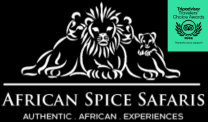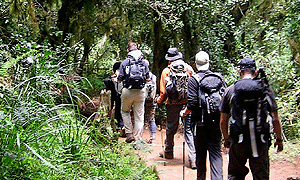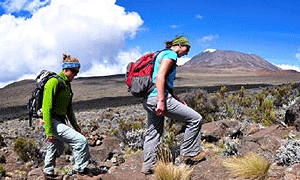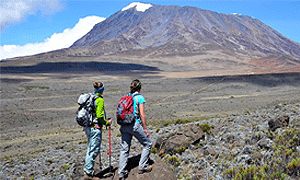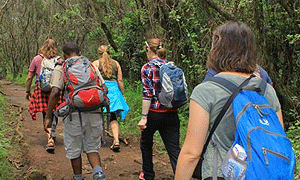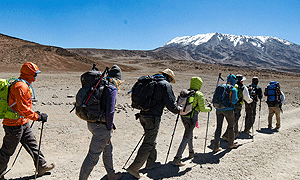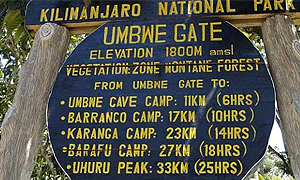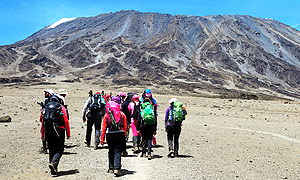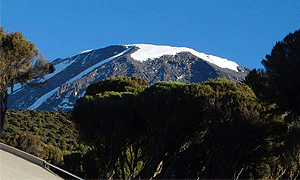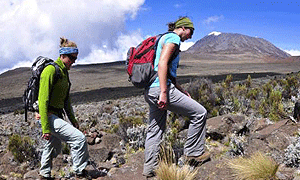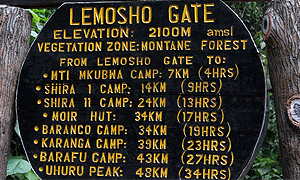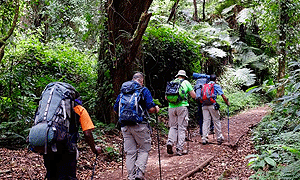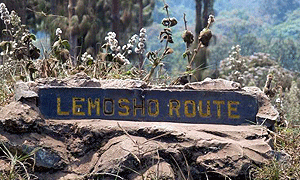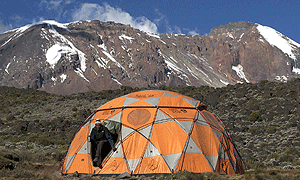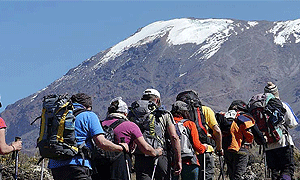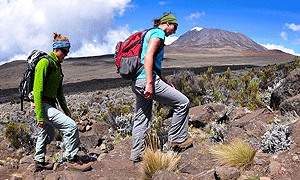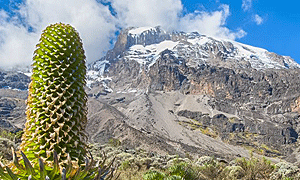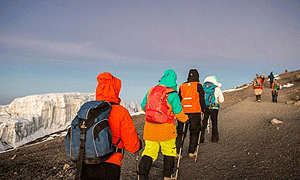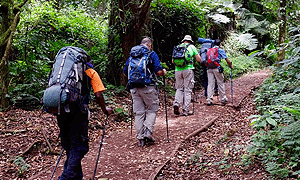Climbing Mount Kilimanjaro
Mount Kilimanjaro, Africa’s tallest peak, is a dormant volcano in Tanzania, renowned for its three distinct volcanic cones: Kibo, Mawenzi, and Shira. Kibo’s Uhuru Peak is the highest point at 5,895 meters (19,341 feet). The mountain is a beacon for adventurers worldwide, offering a trek that is as culturally enriching as physically demanding. The climb takes you through a microcosm of the earth’s ecosystems, from the lush rainforests teeming with wildlife at the base, through the moorland and alpine desert, to the arctic summit where the air is thin and the landscape is stark. Climbers often report a profound sense of accomplishment upon reaching the summit, having traversed five distinct climate zones, each with its challenges and beauty. The final ascent begins in the dead of night so that climbers can witness the sunrise from the highest point in Africa, a moment described by many as surreal and worth every step of the arduous journey.
The ascent is a journey through six distinct routes, each with its allure. The Marangu Route offers the comfort of huts and a well-trodden path, but its success rate is compromised by the temptation to hasten the climb. The Machame Route rewards the adventurous with stunning vistas, earning its nickname “Whiskey” for the challenge it presents. For those seeking a gentler climb, the Rongai Route provides a more gradual ascent from the north, while the Umbwe Route demands respect as the steepest and most direct path, reserved for the seasoned climber. The Lemosho Route is celebrated for its scenic splendor and promises a higher chance of success with its longer course. Lastly, the Shira Route shares Lemosho’s western approach but starts higher, offering panoramic views across the Shira Plateau. Each route, with its unique characteristics, beckons climbers to experience Kilimanjaro’s majestic summit through paths that cater to a range of preferences and abilities.
The optimal times to embark on the Kilimanjaro climb are during the dry seasons, which span from December to March and from June to October. These periods offer the most favorable weather conditions, with minimal precipitation and clearer skies, enhancing both the safety and enjoyment of the trek. However, these windows also coincide with the mountain’s busiest times, so climbers are advised to plan and book their expeditions well in advance to secure their spot. Additionally, the dry seasons provide the best chance for unobstructed views of the surrounding landscapes and the potential for a successful summit.
For a successful Kilimanjaro trek, essential gear includes thermal and waterproof clothing layers, sturdy hiking boots, UV-protection sunglasses, a four-season sleeping bag, a durable backpack with a rain cover, hydration systems, sun protection, a comprehensive first aid kit, and navigation tools. Additionally, trekking poles, a headlamp, and energy snacks are vital, with each item playing a crucial role in navigating the diverse climates and ensuring safety and comfort throughout the climb.
Safety and acclimatization are paramount when climbing Kilimanjaro. The mountain’s altitude poses the risk of acute mountain sickness, so gradual ascent and heeding your body’s signals are crucial. With proper guidance, hydration, and rest, climbers can mitigate these risks. The success rate for reaching the summit varies between 45-65%, with preparedness being a key factor. It’s essential to choose a reputable tour operator, as experienced guides can significantly enhance your chances of a successful and safe summit, making the arduous journey to Uhuru Peak a memorable and rewarding experience.

Climbing Mount Kilimanjaro Africa’s highest peak: Contact African Spice Safaris team today for the most complete and accurate information about climbing Mt. Kilimanjaro.
Get Weather Report, Porters and Best Guides, Best Route, Food and Drink, Camping Gear and Accommodation, safety, Best Time to Climb/ Trek Kilimanjaro etc.
We specialize in small group climbs and private climbing Mount Kilimanjaro Trips. We offer three different climb styles, standard, luxury and VIP for Kilimanjaro Climbs which means we can ensure you are matched with the right level of equipment to suit you.
A VIP climb offers a proper bed, walk-in tents, a wash tent, and a loo tent. The luxury climb offers 3m x 3m dome tents, thick mattresses and sleeping bags, and a separate loo tent. It is a great compromise between cost and comfort.
The standard climb offers a slightly smaller tent with foam pad and separate loo tent. We can offer the choice of joining a group of like-minded climbers or can arrange a private trip just for you.
Climbing Mount Kilimanjaro offers many routes that lead to the summit — Umbwe, Shira, Lemosho, Rongai, Machame, Marangu are some of the major summit routes. We’ll help you choose the trek that’s right for you, based on your experience, desires, fitness level and the time of year.
Climbing Mount Kilimanjaro routes and their variations take between 5 to 8 days to complete but we recommend adding an extra day or two to your trip to help you adjust or adapt to the height.
These treks require no skills or mountain experience, but you should be fit and hardy. Our camp staff will carry your gear, keep you well fed and comfortable, and do their absolute utmost to get you wisely to the summit.
Safety on the mountain is our key concern. Our climbs use new, top of the range kit and equipment. We use only high-quality guides who have constant training to keep knowledge up to date.
All our climbs are equipped with supplementary oxygen, pulse oximeters, and customized evacuation stretchers. All the guides are CPR trained. The guides we use have superb emergency training and the crew have the same access to emergency aid as the paying climbers.
Climbing Mount Kilimanjaro FAQ's
1. When is the Best Time to Climb Kilimanjaro?
The best time to climb Kilimanjaro is the warmest and driest months. January, February, and September are considered to be the best months in terms of weather and are the busiest months. From January through mid-March are the warmest months, with clear skies in the mornings and evenings.
During the day, clouds may appear along with brief showers. From the end of March to early June is the long rainy season. Visibility may be low due to heavy clouds, but the crowds are gone. June, July, and August are good months, but it is colder.
Following September and October, the short rainy season lasts from November through the beginning of December, where afternoon rains are common, but skies are clear in the mornings and evenings.
2. How long does it take to Climb Kilimanjaro?
Mount Kilimanjaro routes and their variations take between five to nine days to complete. Although Mount Kilimanjaro is known as a “walk-up” mountain, you should not underestimate it and its risks. The overall statistics show that less than half of all climbers reach the summit.
The greater the number of days on the mountain, the better your chances of reaching the top. Therefore, the key to a safe, successful climb is to take the longest routes possible. There are minimum days for each Kilimanjaro main climbing route. However, that is not to be confused with recommended days for the route.
We recommend adding an extra day or two to your trip to help you acclimatize to the altitude. We encourage customers to take 7-9-day routes for the best chance of success and the lowest risk of altitude sickness.
3. Which Route to Use When Climbing Mount Kilimanjaro?
There are 7 established routes to climb Mount Kilimanjaro – Marangu, Machame, Lemosho, Shira, Rongai, Northern Circuit, and Umbwe. The Marangu, Machame, and Umbwe route all approach from the south of the mountain (Mweka is used only for descent). The Lemosho, Shira, and Northern Circuit routes approach from the west.
The Rongai route approaches from the north. It is estimated that tourists climb Kilimanjaro using the routes in the following percentages:
Kilimanjaro Shira Route (1%)
Kilimanjaro Rongai Route (5%)
Kilimanjaro Umbwe Route (0%)
Kilimanjaro Lemosho Route (8%)
Kilimanjaro Marangu Route (40%)
Kilimanjaro Machame Route (45%)
Kilimanjaro Northern Circuit Route (0%)
4. Climbing Mount Kilimanjaro Guides & Porters
We provide the best local guides, all of whom are fluent in English and have received extensive training in First Aid, Mountain Rescue, Flora and Fauna, and History. All of our guides are registered with Kilimanjaro National Park. It is forbidden to climb Kilimanjaro without a guide.
You can expect the following from our Kilimanjaro guides: High Safety Standards, Professionalism with fun, Expert Ability teaching on High Altitude Trekking, Mountain Knowledge – information about Geology, Flora, and Fauna of the mountain
Our guides have support teams of assistant guides, cooks, and porters. Porters carry the tents, sleeping bags, mattresses, food, water, cookware, gas, stoves, medical supplies, chairs, tables, and your camping gear.
5. What is the Weather like When Climbing Mount Kilimanjaro?
Temperatures when Climbing Mount Kilimanjaro range from hot to very cold. At the beginning of the climb, at the base of the mountain, the average temperature is around 70 to 80 degrees Fahrenheit (21 to 27 degrees Celsius). From there, the temperatures will decrease as you move through Mount Kilimanjaro ecological zones.
At the summit, Uhuru Point, the nighttime temperatures can range between 20- and -20-degrees Fahrenheit (-7 to -29 degrees Celsius). Due to Mount Kilimanjaro’s great height, the mountain creates its own weather. It is extremely variable and impossible to predict. Therefore, regardless of when you climb, you should always be prepared for wet days and cold nights.
January, February, and March are the warmest months, April and May are the wettest months, June and July are the coolest months, August and September are the driest months.
6. What Gear Do I Need to Carry in my Day Pack?
You are only required to carry items for your day-pack: waterproof gear, extra clothing, water, snacks, gloves, hat, sunglasses, and other small items, such as bug repellent and sunscreen. Consult your guide if you are unsure of what you need.
Everything else should be placed into your duffel bag, which the porters will carry. The weight limit of the duffel bag is 15 kilos. The porters will carry the duffel bag from campsite to campsite. Use plastic bags or dry bags to separate and waterproof your gear.
You will be expected to pack your day-pack and duffel bag each morning. Note that it is acceptable to use a backpack instead of a duffel bag. However, since porters bundle the bag with other items and carry the load on their heads, a duffel bag is preferred.
7. Where Will I Sleep? Accommodation When Climbing Mount Kilimanjaro
Whilst Climbing Mount Kilimanjaro, Climbers sleep either in huts or under canvas in mountain tents that are warm, waterproof, and roomy – perfectly suited for your Kilimanjaro adventure. Climbing Mount Kilimanjaro Marangu route is the only route on the mountain that offers the comforts of sleeping huts and comfortable beds.
These are the Mandara huts, Horombo huts, and Kibo Huts. The huts are communal and each bunk has a sponge mattress and pillow.
8. What is a Typical Day’s Schedule When Climbing Mount Kilimanjaro?
On a typical day starts at 0630 Hours when your waiter/ porter wakes you up and brings you a warm pan of water to wash your face and hands. Breakfast is served in a mess tent – complete with chairs, tables, dinnerware, and silverware. After, you will begin walking around 0830 hours.
While the hours vary from day to day, your average walking time will be around 4 to 5 hours per day. Your guide decides the pace and when to take breaks depending on his assessment of your performance. The porters move ahead of the group to prepare food and set up tents before your arrival. Lunch may be a boxed lunch or hot lunch.
Once you arrive at the campsite, snacks are served. Then, before dinner, a pan of water is again provided for cleanup. Dinner is served around 1800 Hours. The guide will discuss the next day’s events with the group after dinner. Downtime is spent chatting with your fellow climbers, staff, and others sharing the campsite, reading, or otherwise relaxing.
9. Climbing Mount Kilimanjaro Summit Day
Summit day is a tough, 11 to 16-hour day. It begins very early as guides walk you to reach Uhuru Point at sunrise. Climbers go to sleep after an early dinner the night before and are awaken around midnight to prepare for the summit attempt. After a light snack, climbers ascend in the darkness, cold, and wind.
Climbing is difficult, especially on loose rock and up a very steep slope. Once you reach the summit, a short time is spent celebrating and taking photos, before returning to high camp, either Barafu or Kibo Hut.
Climbing Mount Kilimanjaro Hotel Accommodation Options
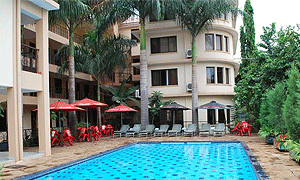
Moshi, Tanzania Hotels
Moshi city is one of the tourist centers in the northern safari circuit of Tanzania and the capital of the Kilimanjaro region. Moshi city is located south of Kilimanjaro and on a clear day, the snowy peak of Africa’s tallest mountain, Kilimanjaro looms large in the distance. Mount Kilimanjaro draws climbers to this Tanzanian town, along with adventurers eager to explore the region’s many natural wonders. Moshi activities include Moshi city tour where you visit the local market (Memorial Market & Mbunyuni Market) stalls that display traditional clothing, fresh fruit, and the famed coffee farms serve up fresh Tanzanian Arabica. Other activities include climbing Mt Kilimanjaro, bike tours, coffee, and Materuni Waterfall tours, walks in Marangu Village & the Kilasiya Waterfall, visit Chagga caves to learn about the history of the Chagga tribe while the bright blue Lake Chala is popular for monkey-spotting hikes, canoeing, swimming, and fishing. You could also enjoy horse riding day trips in Makoa Farm and also visit the hot springs of Rundugai (Kikuletwa/ Chemka springs). Moshi town offers great accommodation before and after your Kilimanjaro climb. Some of the hotels include Secret Garden Hotel, Aishi Machame Hotel, Ameg Lodge Kilimanjaro, Kaliwa Lodge, and Pink Flamingo Boutique Hotel. Click the link on the side to find the best hotels, accommodation options & places to stay in Moshi, Tanzania.
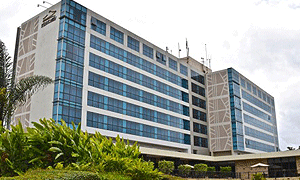
Arusha, Tanzania Hotels
Arusha lies just 100km (62 mi) from Mount Kilimanjaro, the world's tallest free-standing mountain and Africa's highest peak at 5,895m (19,341 ft). Arusha is the gateway to northern Tanzania, meaning most travelers to the country will find themselves there at some point during their trip. This leafy city sits at the foot of Mount Meru and near Kilimanjaro, the highest African peak. The best activities & things to do in Arusha include safaris to Tanzania Northern Circuit which include Serengeti, the Ngorongoro Crater, Lake Manyara, and Tarangire, Climbing Mount Meru & Climb Mt Kilimanjaro, a day trip to Arusha National Park which include canoeing on Lake Momella, take a nature walk at Lake Duluti, Visit the National Natural History Museum Arusha, visit and shop at the local Maasai Market, Visit the Cultural Heritage Centre and visit the Chemka Hot Springs. Arusha town offers great accommodation, hotels & lodges. Some of the hotels include Waka Waka Hostel, The White House of Tanzania, Mambo Arusha Hostel, Banana Farm Eco Hostel, Tulia Boutique Hotel & Spa, Mount Meru Hotel, Gran Melia Arusha, Karama Lodge, Rivertrees Country Inn, Onsea House, and Arusha Coffee Lodge. Click the link on the side to find the best hotels, accommodation options & places to stay in Arusha, Tanzania.
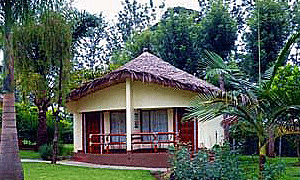
Kilimanjaro, Tanzania Hotels
Kilimanjaro Region, Tanzania forms part of the Northern Tourism Circuit in Tanzania. It is home to the Kilimanjaro National Park (which contains Mount Kilimanjaro), the Mkomazi National Park, the Pare Mountains, Lake Jipe, and Lake Chala. Kilimanjaro Region includes Moshi, Marangu, Mwanga, and Same. The best activities & things to do in Kilimanjaro Region include safaris to Serengeti, Ngorongoro, Manyara, full-day Tours Arusha National Park, visit to Kikuletwa Hotsprings, Materuni Waterfalls, climbing Mount Kilimanjaro, visiting Lake Chala, Kilimanjaro Animal C.R.E.W, Olpopongi - Maasai Cultural Village & Museum, Uhuru Museum, Kilimanjaro Friendship Trail, Ndoro Waterfall and Chagga Museum, Private Market Tour and Tanzanian Cooking Class in Moshi and Cycling Chagga Tribe Experience (coffee making, hot lunch, waterfalls), Kilimanjaro Region offers great accommodation, hotels & lodges. Some of the hotels include Mount Kilimanjaro View Lodge, Kilinopark Hotel Machame Gate,Salinero Millie Lodge, Kilemakyaro Mountain Lodge, Aishi Machame Hotel, Kilimanjaro White House Hotel, Weru Weru River Lodge, Stella Maris Lodge, etc. Click the link on the side to find the best hotels, accommodation options & places to stay in Kilimanjaro Region, Tanzania.
Climbing Kilimanjaro Tanzania Safari Extensions
Add an Optional Tanzania Safari After Your Climb! After you have conquered Kilimanjaro, you can reward yourself with a safari in Tanzania’s amazing National Parks which are close enough to Kili that you don’t have to travel too far.
These include Lake Manyara, Ngorongoro Crater, Serengeti National Park, Selous Game Reserve, Mahale Mountains, and Gombe Stream National Parks. Or rest your tired limbs and relax on Zanzibar’s tropical beaches and explore Stone Town, Pemba, or Mafia Island.
Tanzania Safari Adventure Trips
Add This Exciting Tanzania Safari before or after climbing Kilimanjaro: Click Here
Booking & Reservations Climbing Mount Kilimanjaro Contact
Mobile: + 254-721-242-711
WhatsApp: +254-721-242-711
Reservations: +254 718-179-967
Email: info@africanspicesafaris.com
Website: https://africanspicesafaris.com
